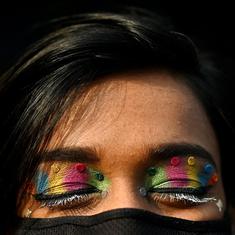This is how Hollywood is trying to ensure digital versions of humans don't look creepy
Watch most Hollywood films these days and you don't even realise how much of it is computer-generated effects. Everything from desert landscapes to scary dinosaurs are produced through powerful computing. But the uncanny valley remains. "Uncanny Valley" refers to the weird reaction most people have when seeing a computer-generated image of a person, because, as good as the graphics may be, it is incredibly hard to properly represent a human face. That's why most animated movies prefer clearly caricatured and stylised faces rather than realistic ones, because the harder we try to make realistic faces, the more creepy they get.
In 1985, a Hollywood film called Young Sherlock Homes, directed by Barry Levinson, mesmerized the audience when in a scene, fragments of stained glass inside a church magically unite to form an armoured knight. Within a decade, films started to have many digitally produced elements like metal men, spaceships and dinosaurs. But there was something about the human face that seemed unattainable. Digital artists just couldn’t achieve the complex geometries of a face to make it look real. In 1988, animators at Pixar made a short movie called Tin Toy in which a baby menaces, and then charms, a toy. It was a successful test-run for Toy Story except for one thing: the infant was inadvertently unnerving.
In 2004 director Robert Zemeckis tried generating hyper-realistic scans of Tom Hanks and Josh Hutcherson in his film Polar Express. The animation of the film stole the show but scanned actors occasionally got a little creepy.
10 years later, in the first in a new series from The Creators Project, this video explores how high-resolution face and body scanning has transformed the industry and how digital technologies can help create another human replica. The video also explores the current cutting edge technology revealing how Hollywood studios are creating digital humans which we tend to miss out on big screens, because they look absolutely real. Watch 2009 blockbuster Avatar, where most of the “Navis”, the protagonists of the film are digitally produced and look absolutely real.










